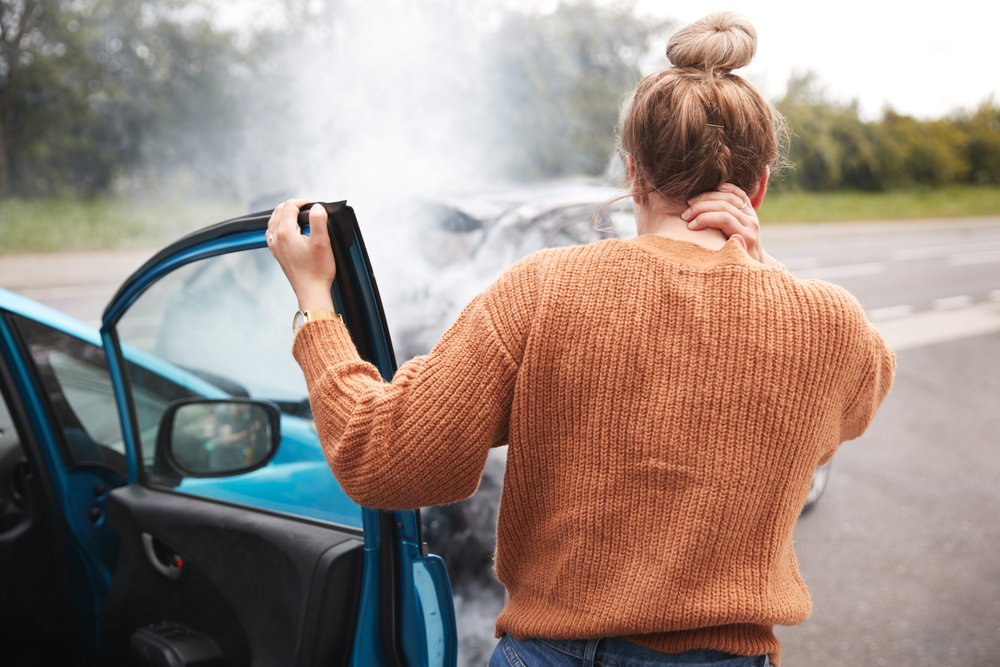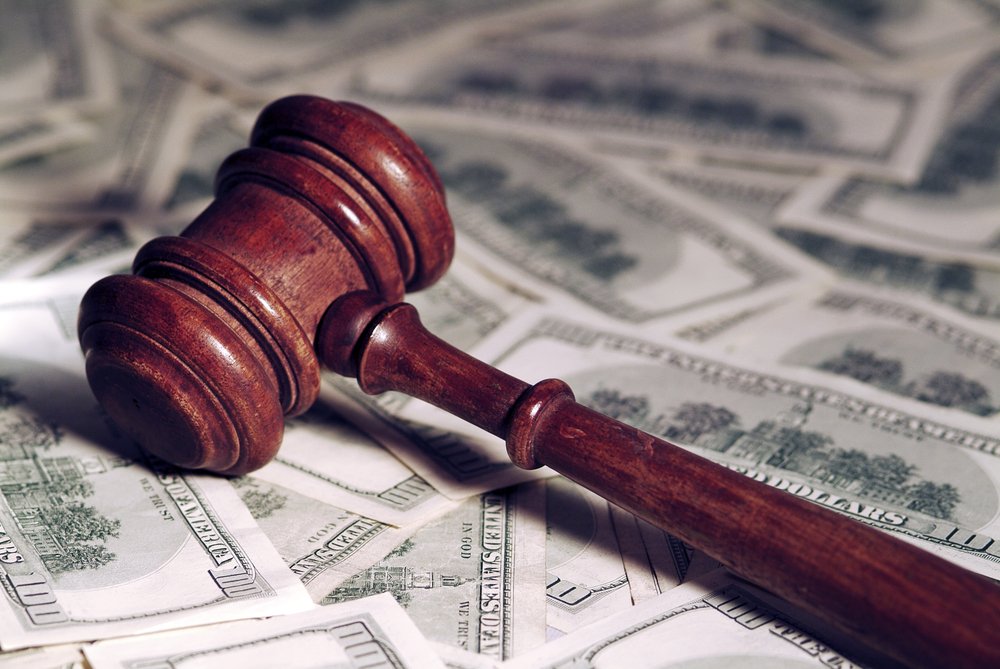Almost all jurisdictions say that drivers are at fault in head-on collisions if they cause the accident while driving negligently. Negligence means that a driver failed to use reasonable care under the circumstances (maybe, for example, a motorist caused a collision by making an illegal left turn).
If a driver is found to be at-fault, then he/she may be liable to any injured drivers, passengers, or pedestrians for things like their medical expenses, lost wages, and pain and suffering.
In most states, injured parties can even recover these types of damages if they helped contribute to a collision or their injuries. Under “comparative fault” laws, injured drivers that helped cause an accident can still recover damages, but the amount of their recovery will be reduced by their percentage of fault in the collision.
Sometimes a head-on collision can kill another motorist. In fatal crash cases, the deceased’s family members can file a wrongful death lawsuit against the negligent motorist. Parties in these suits can recover:
- burial and funeral expenses,
- amounts the deceased would have earned as income, and
- compensation for the loss of the deceased’s companionship and support.
Our California personal injury lawyers will highlight the following in this article:
- 1. Who is at fault in a head-on accident?
- 2. What damages are available in a head-on crash lawsuit?
- 3. Can drivers still recover damages if they were partly at fault?
- 4. What is a wrongful death lawsuit?
- 5. What is the law in California?

“Negligence” plays a great role in determining fault in a head-on accident.
1. Who is at fault in a head-on accident?
Motorists are at fault in head-on accidents if they caused or contributed to them.
A driver is deemed to be responsible for a head-on car crash if he/she caused it while driving negligently.
“Negligence” is a legal term that means a motorist failed to use such care as a reasonable person would use under similar circumstances.1
Examples of negligent acts that may cause a head-on collision include a driver:
- violating a traffic law, like driving at high speeds,
- driving while distracted,
- engaging in drunk driving,
- operating an unsafe vehicle,
- turning in front of oncoming traffic without yielding,
- making an illegal U-turn,
- driving in the opposite directions of traffic, or driving on the wrong side of the road,
- driving the wrong way, and
- crossing a centerline on a two-lane road.
Note that a judge or jury will typically determine if a person negligently operated a motor vehicle by examining all of the facts in a case.
Head-on collisions, as opposed to rear-end collisions, are among the most dangerous types of vehicle accidents. These auto accidents can result in the following types of injuries:
- a traumatic brain injury (TBI),
- spinal cord injuries,
- whiplash,
- broken bones,
- head injuries,
- neck injuries, and
- concussions.
2. What damages are available in a head-on crash lawsuit?
The driver and/or passengers injured in a head-on collision can recover damages by filing a lawsuit against the negligent driver. If successful, the driver or passenger may recover compensatory damages.
Most jurisdictions say that there are two types of compensatory damages. These are economic and non-economic damages.
Economic damages provide compensation for things like:
- medical bills,
- property damage,
- lost wages,
- lost earning capacity, and
- out-of-pocket expenses
Non-economic damages provide compensation for things that are more difficult to quantify. Some of these things include:
- pain and suffering,
- loss of consortium, and
- disfigurement.
In some cases, as Los Angeles car accident lawyer Neil Shouse explains, an injured driver may be able to sue for punitive damages, or “exemplary damages.” Punitive damages are not based on the injured motorist’s losses but instead are based on the defendant’s wrongful conduct. Punitive damages may be available when the other driver acted with extreme recklessness or intentionally caused some harm.
Note that in most jurisdictions, injured drivers can avoid a lawsuit by filing a personal injury claim with the at-fault driver’s insurance company.
But if this claim gets denied, or if an at-fault party did not have insurance, then the injured motorist will have to file a suit in court.
No matter if a person files a claim or lawsuit, it is critical that the party consult with a car accident attorney for help. Head-on collision settlements can range from a few thousand dollars to over a million dollars. Car accident lawyers can help injured drivers/passengers make sure that they can prove negligence and get the damages they deserve.

A few states say that if a driver was partly to blame for an accident, then that person cannot recover damages from another.
3. Can drivers still recover damages if they were partly at fault?
Sometimes more than one driver is guilty of negligent driving and contributing to an accident. Maybe, for example, a driver was hit by another motorist but suffered injuries because he/she was not wearing a seatbelt.
A few states say that if a driver was partly to blame for an accident, then that person cannot recover damages from another.
However, most states are “comparative fault” states. Comparative fault states say that a party can still recover damages from another driver even if the party was partly to blame for the accident.
In these situations, though, the amount of money that a driver can recover will get reduced by his/her percentage of fault in causing the accident.
Example: John makes an illegal left turn onto 1st Avenue. Mark is slightly speeding down 1st Ave and collides with John. John’s airbag deploys and he is not hurt in the collision. Mark, however, suffers whiplash. The injury costs him $2,000 in medical expenses and physical therapy.
Mark files a personal injury lawsuit against John to recover damages for his serious injuries. A judge finds that John was negligent in the accident, but also finds that Mark was 25% to blame for the collision. Here, Mark can recover $1,500 in compensation. This is $2,000 minus Mark’s percentage of fault (which is $500).
4. What is a wrongful death lawsuit?
Head-on collisions can sometimes prove fatal. If a child, spouse, or parent was killed in a head-on collision, the surviving family members may be able to file a wrongful death lawsuit against the negligent driver who caused the collision.
The damages available in a wrongful death lawsuit can include the losses suffered by the family members after the death of a loved one. These may include:
- funeral expenses,
- burial expenses,
- loss of earnings the victim would have earned, and
- compensation for the loss of companionship, affection, and support.
Note that most jurisdictions do not allow punitive damages in a wrongful death suit.
5. What is the law in California?
California law regarding head-on collisions follows the general rules and points mentioned above.
Under state law, a motorist acts negligently when he/she fails to use reasonable care when driving. This standard requires drivers to:
- use reasonable care in driving a vehicle,
- keep a lookout for pedestrians, obstacles, and other vehicles, and
- control the speed and movement of the vehicle.2
Making left turns in front of oncoming traffic are common causes of head-on collisions in California. Under California’s “right-of-way” laws, drivers are required to yield the right-of-way to all vehicles approaching from the opposite direction until the turning vehicle can make the turn safely.3
As to shared blame for an accident, California is a comparative fault state, which means a driver can sue for damages even if he/she partly caused a collision.4
In addition, California’s wrongful death law allows surviving family members or the estate to sue for damages when a person dies as the result of someone else’s wrongful act – whether the act was negligent, reckless, or intentional. The law is set forth in the statute Code of Civil Procedure (CCP) 377.60.
Damages can include (but are not limited to):
- burial and funeral expenses,
- amounts the deceased would have earned as income, and
- compensation for the loss of the deceased’s companionship and support.
A wrongful death suit is frequently coupled with a California “survival” cause of action under CCP 377.30. Survival causes of actions are brought on behalf of the victim’s estate to compensate for losses suffered by the victim (as opposed to the family) from the wrongful act.
Note that punitive damages are not available in a wrongful death lawsuit in California. The only way to get punitive damages from a wrongdoer is through a survival cause of action.
Legal References:
- Black’s Law Dictionary, Sixth Edition – “Negligence.” See also Amoco Chemical Corp. v. Hill (1974), Del.Super., 318 A.2d 614.
- California Civil Jury Instructions (“CACI”) 700 – Basic Standard of Care.
- CACI 704 – Left Turns. See also CACI 705 – Turning.
- CACI 406. See also Pfeifer v. John Crane, Inc. (2013) 220 Cal.App.4th 1270.
